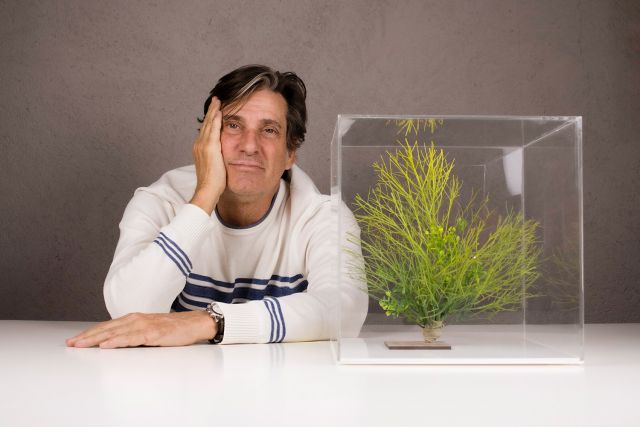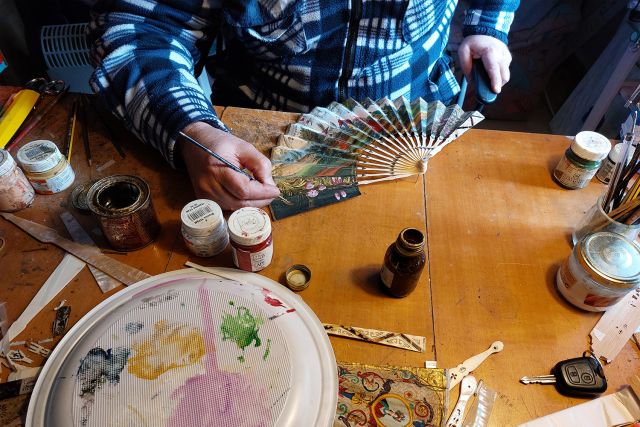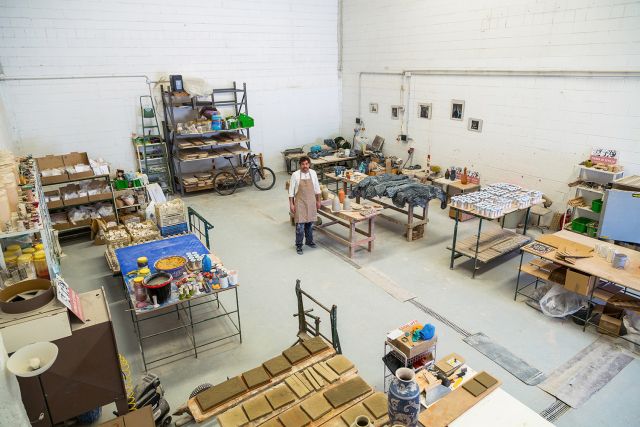Artisan Estefania Padilla has handcrafted Yamb, a beige stoneware jug inspired by African culture, art and nature. The ceramicist used the pinch technique to create the base, joining two bowls at their widest point. She also used the slab technique to create the neck and handle of the jug, which has a textured design. Finally, Estefania brushed the jug with an off-white enamel, revealing the piece's irregular pattern and different layers.
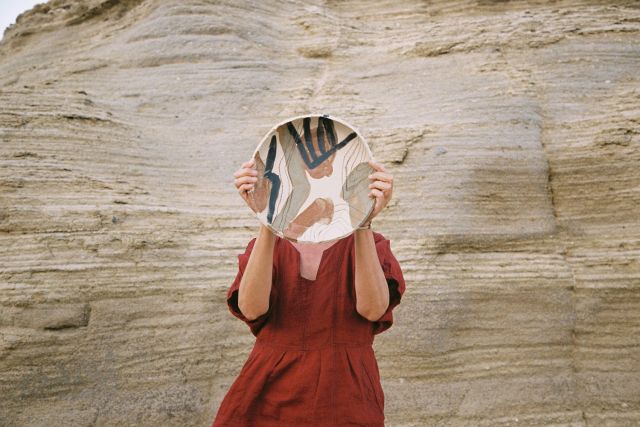
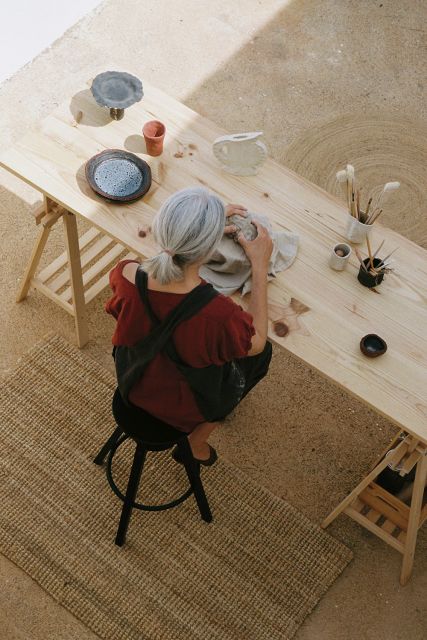
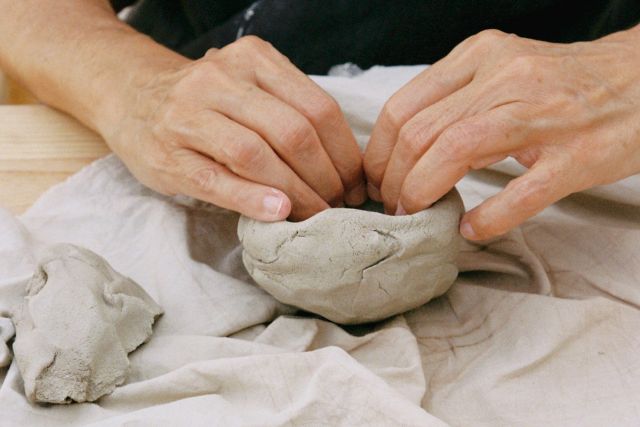
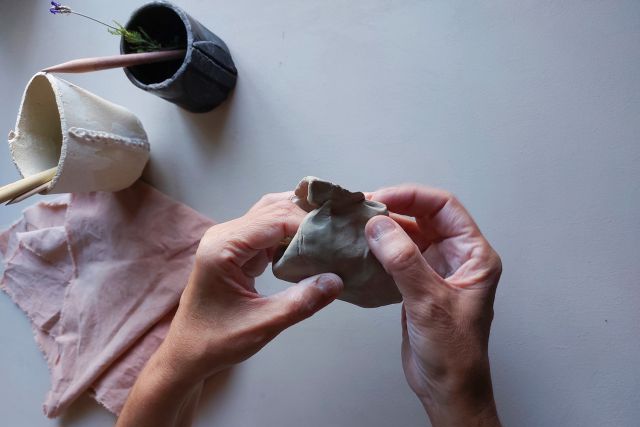
Estefanía Padilla
- asterisque
- Ceramicist
- Almeria, Spain
- Master Artisan
By appointment only
+34 623069374
From the rhythm of Nature
- • Estefanía creates imperfect ceramics with organic geometry
- • Her work is inspired by the desert landscape of Almería and the Mediterranean
- • Working in her home studio in Cabo de Gata, she experiences a sense of liberation
A few years ago, Estefanía Padilla enrolled in a ceramics course organised by a local council and discovered a craft that allowed her to lose track of time. Upon completing the course, she found it impossible to give up her new craft. Since then, she has dedicated herself to improving her skills through self-education. She believes this profession chose her because she never imagined making ceramics as a means of earning a living. Based in Cabo de Gata, a cape in Almería, southern Spain, where she has established Asterisque, her home workshop, Estefanía continues to create handmade decorative and utilitarian pieces using Spanish materials sourced from the region. Her creations are inspired by the isolated semi-deserts, arid lands, dusty dunes, and volcanic slopes that are constantly battered by the strong winds and waves of the Mediterranean Sea. She describes her work and way of life as deeply influenced by the powerful and unhurried rhythms of nature.
Read the full interviewWorks
Photo: ©All rights reserved

Photo: ©All rights reserved
Estefania Padilla made a black and white stoneware plate using the slab technique. She then brushed it with beige clay to create a deliberately irregular layer. The ceramicist wanted to create a distinctive texture, as the stoneware's natural colour appeared in the areas with less engobe. Finally, she sgraffitoed the plate, removing the white clay to reveal the striking black colour of the stoneware underneath. This process allowed her to add an intricate irregular pattern of curved and straight lines to the piece.

Photo: ©All rights reserved
Estefanía Padilla created this beige stoneware mug inspired by the irregularities of human skin. She used the pinch technique for the rounded base and the slab method for the body and handle. Estefanía shaped the handle by hand, giving it a unique, organic and irregular shape. She then brushed it irregularly with an off-white glaze and scraped it with the brush, creating different layers and textures to reveal the original colour of the stoneware.

Photo: ©All rights reserved
Estefanía Padilla handcrafted Rīp, a beige chammotte stoneware bowl inspired by the Latin term 'rīp', which means to rip or tear. The ceramicist used the slab technique for both the cylindrical base and the top of the bowl. She tore the rim by hand, giving the bowl its distinctive, organic and irregular shape. Finally, she used a brush to glaze the piece with irregular and broken white or grey-green glazes.

Photo: ©All rights reserved
Lum, a vase made of beige refractory clay, takes inspiration from the spinal column. The ceramicist used the coil technique and hand-sewed the piece to achieve an organic and natural shape, narrower at the top and bulging at the bottom. Finally, she added a longitudinal coil as the only decorative element that resembles the vertebrate appearance of a spine.





